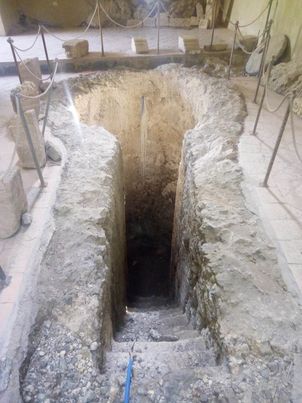The construction characteristics of the large room that housed the cannon foundry (thickness and continuity of the curtain walls) date this extension of the St. Mary's bastion to the same 16th-century phase as the main site. Of the original structure, only the 'fire pit' remains, which, located at the lowest level, fed the smelting chambers; the refractory masonry superstructures and the more perishable wooden frames, for the support work, are completely missing.
0:00
/
0:00
Listen
